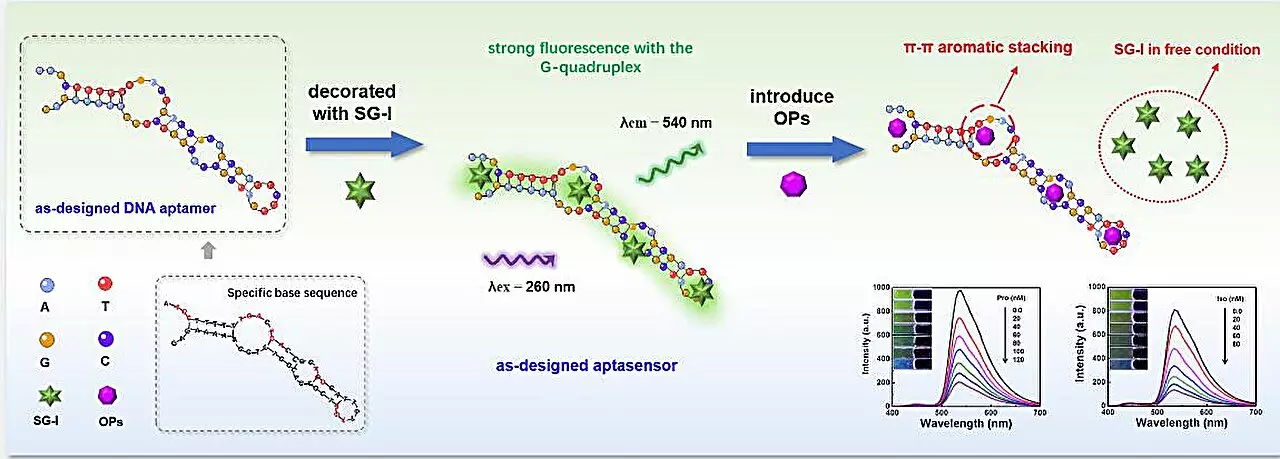A groundbreaking advancement has emerged from the research led by Prof. Jiang Changlong at the Hefei Institutes of Physical Science, marking a significant leap in the field of pesticide detection. The new DNA aptamer-based sensor has been engineered to provide not only rapid but also quantitative analysis of organophosphate insecticides, including notorious substances like profenofos and isocarbophos. These compounds are prevalent in agricultural practices due to their efficacy in pest control but pose an alarming threat in terms of health risks associated with their residual presence in food and the environment.
The study published in *Analytical Chemistry* underscores an urgent need for effective detection methods in the ongoing battle against chemical residues. With organophosphate insecticides becoming ubiquitous in farming practices worldwide, the challenge lies in balancing agricultural productivity with consumer safety. Traditional methods of detection often fall short, failing to deliver timely and reliable results necessary for quick decision-making in agricultural settings.
The Mechanics of Detection
At the core of this innovative sensor’s functionality lies its interaction with engineered DNA strands known as aptamers. These molecules are particularly adept at binding select target molecules—like the organophosphate insecticides in question. By employing a clever colorimetric method, the sensor employs a specific green dye (SG-I), which encodes initial safety levels by fluorescing green under normal conditions. The genius of this design becomes apparent when the sensor encounters target insecticides; they disrupt the aptamers’ structure, leading to a notable shift in fluorescence from green to blue. This visual cue provides users with an immediate and intuitive presentation of the chemical danger lurking in their samples.
The sensor’s remarkable sensitivity is emphasized by detection limits as low as 2.48 nM for profenofos and 3.01 nM for isocarbophos. Such precision not only meets but surpasses the standards required for safe consumption and environmental integrity, ushering in a significant advancement towards ensuring public health.
Adding Portability Through Technology
In another noteworthy advancement, the researchers have harnessed 3D printing technology, marrying it with a smartphone color-identifying application to create a portable detection platform. This seamless integration of technology means that farmers and environmentalists alike no longer need to rely on complex, traditional laboratory analyses to check for pesticide residues. Instead, they can perform on-site evaluations, drastically improving response times to potential safety issues and thus ensuring that harmful residues do not make their way into the food supply.
Prof. Jiang’s assertion about the platform’s capabilities reflects a commitment to enhancing food safety with a user-friendly tool that empowers stakeholders across the agricultural chain. This not only aims to safeguard consumer health but also positions the agricultural community to address challenges from regulatory bodies and public scrutiny more effectively.
With these developments, we are not just witnessing a robust scientific innovation; we are stepping into a new era of environmental stewardship where swift, reliable, and accessible pesticide detection plays a pivotal role in ensuring the safety of our food systems.


Leave a Reply